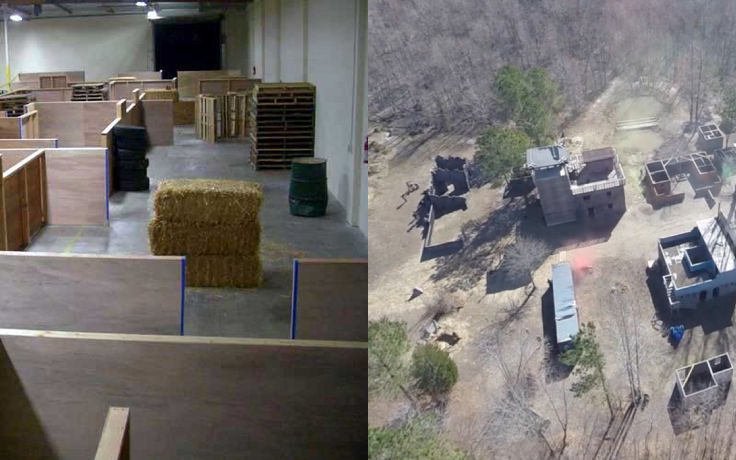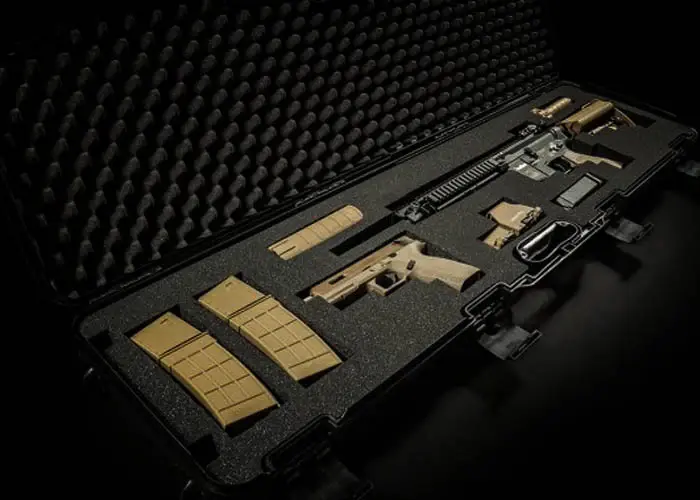AEG VS HPA
- MadCave Airsoft
- Dec 20, 2024
- 3 min read

I mean, AEGs are just so much easier to get into! - True, but if you’re serious about performance - I get that, but let’s be honest, the complexity and cost of an HPA - but once you’ve tried HPA, you’ll never go back Blah, Blah, Blah....After being in the community for some time, this is some of the comments you might hear....if you wanna be part of the conversation or just understand a bit what people are talking about, here we share with you 10 main differences between AEGs and HPA
1. Power Source
AEG (Automatic Electric Gun): Runs off a rechargeable battery (like LiPo or NiMH) that powers an electric motor. The motor drives the gears inside the gun, which fires the BBs.
HPA (High Pressure Air): Uses a tank of compressed air (think of it like a scuba tank for your gun) to shoot the BBs. The air is regulated and released through a system to push the BBs out.
2. Internals
AEG: Has a motor, gearbox, piston, and a bunch of gears and springs inside. It’s more mechanical, so there are more parts to break or tweak.
HPA: Fewer moving parts inside the gun. The air is controlled by electronic components, which means less mechanical stuff to deal with, but more tech to set up.
3. Customization & Tuning
AEG: You can swap out parts like gears, motors, and hop-ups, but tuning it takes time and effort.
HPA: Super customizable! You can adjust the air pressure, rate of fire, and trigger response all electronically, so it’s easy to fine-tune on the fly.
4. Rate of Fire
AEG: Can shoot around 15-30 rounds per second (RPS), depending on the setup. High-end AEGs can go faster, but there’s a limit.
HPA: HPA setups can easily shoot 30+ RPS, and you can go even higher with some systems. It's much faster and smoother.
5. Consistency
AEG: The rate of fire and power can drop if your battery is low or during long play sessions.
HPA: Super consistent. The air pressure is stable, so your shots will be more reliable throughout your game.
6. Maintenance
AEG: You’ll need to maintain the motor, gearbox, and electrical components. More parts = more things to fix.
HPA: Easier to maintain since there are fewer moving parts. The main thing to keep an eye on is the air tank and regulator.
7. Realism
AEG: Feels more traditional, and with some upgrades, you can get a recoil effect. It’s good for that "real gun" feel.
HPA: The lack of mechanical parts means it doesn’t feel as “real” in terms of recoil, but you can adjust the setup for a smoother, faster experience.
8. Upfront Cost
AEG: Usually cheaper. You just need the gun and a battery to get started.
HPA: More expensive because you need to buy the air tank, regulator, and HPA system itself. It adds up quickly.
9. Weight
AEG: Can be a bit heavier due to the motor and gearbox, plus the battery adds more weight.
HPA: The gun itself is lighter, but the air tank adds weight. So, overall, HPA can be heavier because of the tank.
10. Battery or Air Supply Duration
AEG: The battery can die during a game, so you’ll want to bring extras.
HPA: The air tank can run out, but you can easily refill it. Depending on your style, you may need to top it off during the day.
Summary
AEG: Great for people who want a traditional, more affordable setup. It’s a bit more maintenance-heavy and can be less consistent over time.
HPA: Perfect for those who want top-tier performance with a ton of customization. It’s more expensive, but you get consistent, high-performance gameplay.
In short, AEGs are cheaper and easier to get into, while HPA is for players who want faster rates of fire, better consistency, and are okay with a bigger upfront cost.




Comments